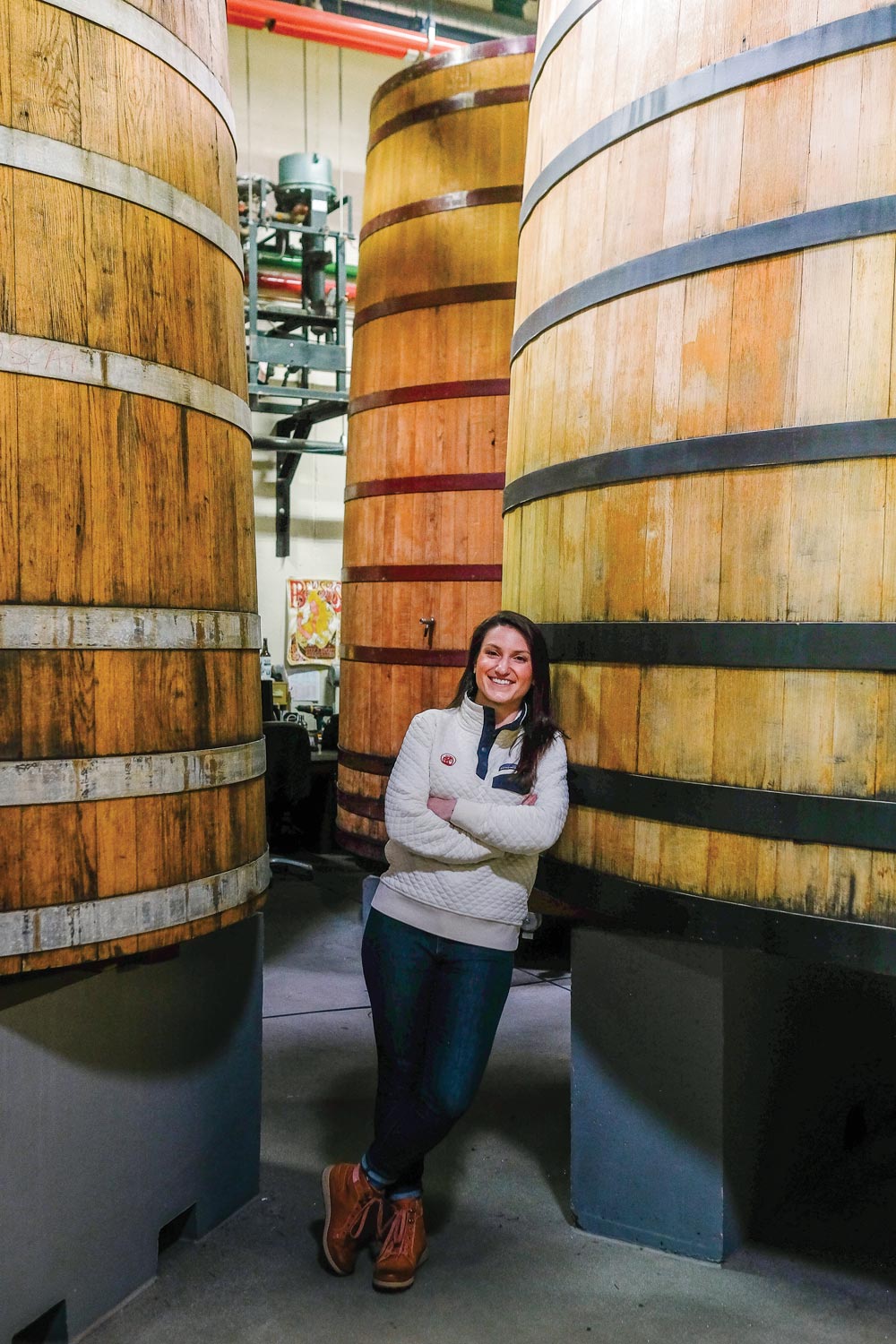We’re a Colorado company with a local touch and a global reach, and we’d like to welcome you into our home.
{ Spring 2018 }
Contents
42
Tiny homes promise to solve Colorado’s big housing problems—but only if we find a way to make them fit in.
By TonI Mclellan
48
Of fermentation, that is. Meet five NoCo women who are poised to change what you sip—for the better.
By josie sexton
54
With help from those on the NoCo front lines we get to the heart of the matter.
By Andrew Kensley
Currently Viewing Our Preview Edition
Subscribe & View Our Full Edition
{ Spring 2018 }
Letter from the editor
Some of the happiest times of my life have been when I lived in the smallest possible space.
For starters, my shared college dorm room, freshman year, which was pinchy even by dorm standards at 10 by six feet. Then there was the one-room apartment I had outside of Osaka, Japan, furnished only with a futon, a table and a bookshelf. There was the tiny cinderblock duplex on Prospect Road during grad school. Later, a one-bedroom condo my partner and I shared as newlyweds, where our baby slept in the living room and we stored our bikes, grill, skis and baby toys in a hatch under the stairs we called The Doghouse.
Despite the romance of it, the tiny thing didn’t really stick. We needed to get the baby out of the living room. We currently live in someone’s idea of an ’80s dream house that’s got enough wasted space to make any minimalist weep and enough bathrooms to clean to make me weep. I love our home and we’re very fortunate. But it’s my constant partner, as I work from a home office, and it fills my thoughts. Declutter it. Clean it. Pay for it. Stain it. Replace the roof. Repaint the walls because someone had a Sharpie and an artistic vision. On it goes.

I once worked at a magazine where we profiled a doctor who studied happiness. “Do you know,” he asked, “what people say their number one barrier to pursuing happiness is?” Answer: “I have a mortgage.” Meaning, sister, I’ve got commitments. I can’t just do what I want because I’m accountable to a bank every 30 days for the next 30 years.
Which is funny. The thing so many of us in Colorado dream about—finding and affording a home here—can become the thing that ultimately keeps us from dreaming further, like opening a bakery, sailing the Carribean, or taking that volunteer teaching gig.
I think back about those tiny-room days. What was the constant? I didn’t worry about home. I spent as little time and money as possible on it; instead I was focused outward. They were times of big change and great adventure and the little rooms were just places to sleep and regroup as I built my life. New people, education, travel, love, motherhood—that’s where I “lived.” I was so busy building who I was that I didn’t have the time or energy (or Pinterest account) to focus on a bigger, better house. I was forced out of the bubble of a domestic haven and into the world, and those days changed me.
In the pages that follow, we explore the tiny house movement; it’s fascinating from both a philosophical point of view and a practical solution to our housing challenges, suggesting that less can totally be more. But we don’t just leave the exploration there. This issue is full of stories to prompt us to shake off our perceptions and leave the bubble, whether it’s by looking at how women’s voices are being heard in new fields and conversations, thinking about our communities and how they’re shaped by immigration, or pairing edible bugs with gourmet dishes.
It’s easy, sometimes, to retreat inward and not look out as much as we once did. But we’d miss out on the unfamiliar, the new, the uncomfortable and the different. And in the end, our lives would be so much smaller.

Cara McDonald, Editor / Fort Collins Magazine / [email protected]

Tiny homes promise to solve Colorado’s big housing problems—but only if we find a way to make them fit in.
By Toni McLellan

Hunter Buffington lives off the grid in Larimer County, Colorado near Fort Collins. “I’d love to tell you where we’re based, but it’s technically illegal,” she says. The PR and event production manager lives with her husband and son in a converted bus dubbed The Rebel Ant. “She’s a rebel because she doesn’t follow the other ants in the colony,” says Buffington of her home on wheels. An advocate for the tiny house movement, Buffington is also breaking rank by living independently in an area where affordable housing and increasing population density are serious issues.

Of fermentation, that is. Meet five NoCo women who are poised to change what you sip—for the better.
By Josie Sexton
Photography by Stephanie Powell


![]()
As a 21-year-old college graduate, Stephanie Palladino found herself managing 10 Anheuser-Busch union men the age of her dad. She had majored in chemistry and didn’t expect to put her degree toward brewing, but Palladino’s father worked at Budweiser and mentioned that it could be a potential career for her. “If he hadn’t said anything, it never would have occurred to me,” Palladino says. Eleven years later, she’s New Belgium’s brewing manager, leading 31 brewers and working with eight leadership members, making sure the fourth-largest craft brewery in the country puts out consistently good beer. She keeps her team on schedule and oversees the everyday production of brands from flagship Fat Tire to experimental Juicy Haze. But Palladino confesses that when she started working in breweries, she didn’t love beer. “I [eventually] fell in love with beer because of what it is as a science and what it is as an art,” Palladino says. She and her team enjoy discussing the next trends in craft beer and the latest ingredients, and they’ll also geek out over a perfected and replicated process in the lab. “You’re very much interacting with the science,” she says. It’s a message she has extended while working with middle-school girls in STEM (science, technology, engineering, and mathematics) programs. And it’s a message she hopes to transmit when giving tours of the brewery to young women. “This is science?” the younger kids will ask, and she’ll answer: “Yes! This is science!”
Special Full Article

By Andrew Kensley
Forget what you think you know from cable news commentary and online echo chambers. With help from those on the front lines of NoCo’s immigration situation, we get to the heart of the matter.
The practice of seeking better lives, wherever it takes us, isn’t abating anytime soon.
According to the Migration Policy Institute, an independent, nonpartisan think tank, 43.3 million immigrants were living in the United States in 2015, or just over 13 percent of the total population. While this represents about a 30 percent increase since 2000, the number has remained relatively stable over the last 15 years.
Your state is home to over half a million immigrants—legal and otherwise.
This Full Article Is Available For Subscribers

Spring 2018 Preview Issue
Share this issue
Currently Viewing Our Preview Edition
Subscribe & View Our Full Edition



